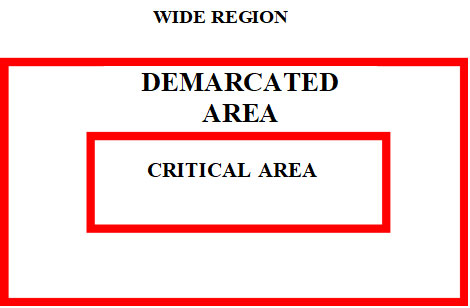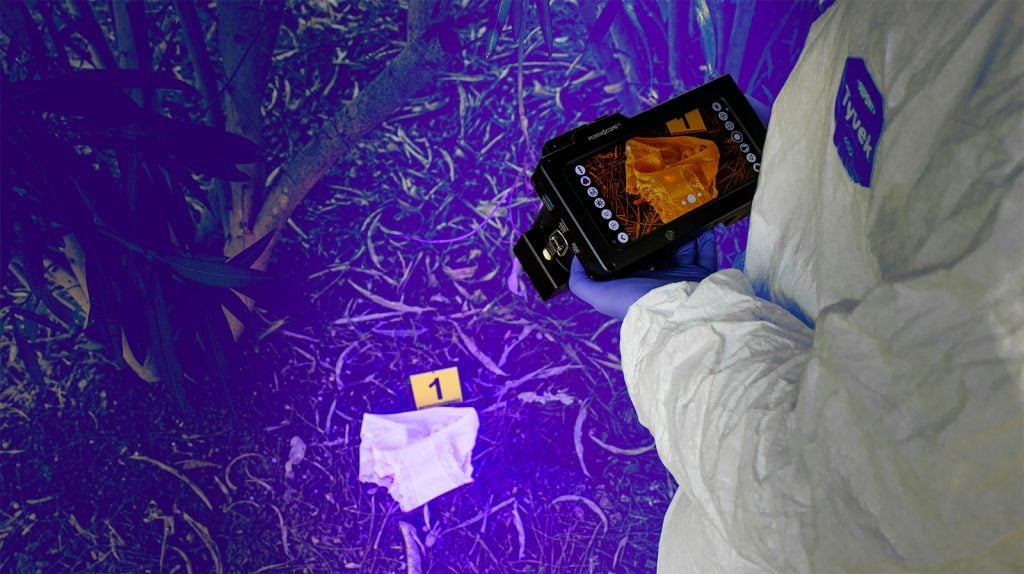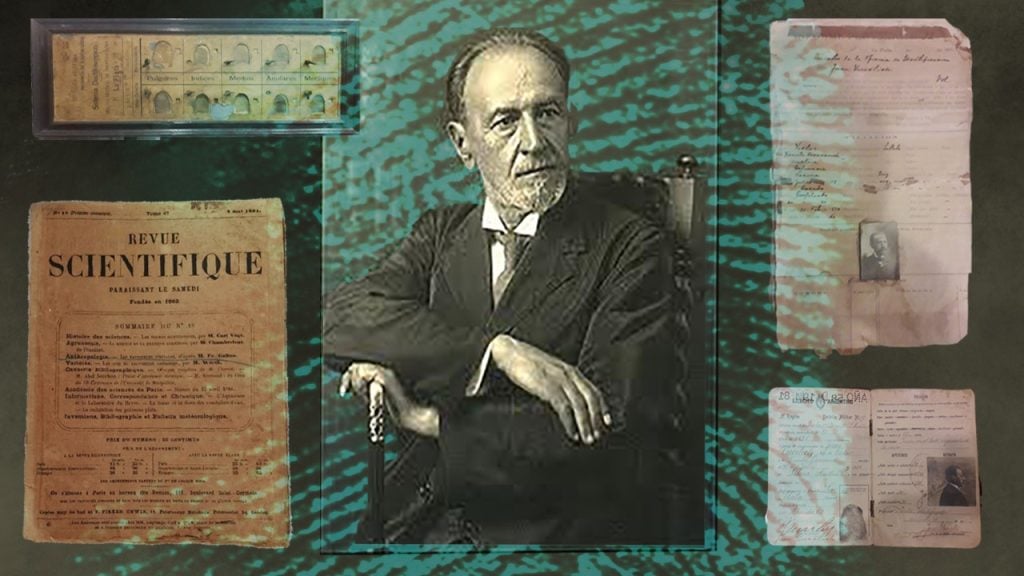The establishment of a basic, consensual, and coordinated intervention methodology at the crime scene will optimize the use of resources and will certainly help to increase the proportion of solved crimes, which is a fundamental objective in the fight against impunity.
Consequently, it is essential to be considered to avoid later mistakes that could hinder the collection of evidence relevant to the investigation of the crime and is particularly relevant for the first moments of both police and judicial intervention.
It should not be overlooked that expert procedures are of a highly scientific nature and are carried out on concrete, physical and real elements of the crime scene or related to the crime scene, including the perpetrator and its participants; therefore, the preservation, conservation and preservation of the crime scene are of fundamental importance.
It is essential that those who act as obstacles at the place of incident, which may later be characterized as the crime scene, know the basic rules on access to and treatment of the crime scene in order to be able to preserve the evidence that will enable them to establish the truth of what happened by their actions as the first person and authority to arrive at the scene. Ignorance or unintentional mistreatment can lead to the destruction of evidence.
THE PLACE OF INCIDENT is the physical space in which an incident subject to a criminal scientific investigation occurred for the purpose of establishing its nature and the intervener, characterized by the presence of elements, traces and/or indicators that may reveal the circumstances or characteristics of what happened there; when the nature, circumstances and characteristics of the incident are sufficient for the commission of a crime to be suspected, it is called THE SITUATION OF THE CRIME.
Crime scenes can be classified as follows according to their characteristics:
Enclosures: Enclosures that are surrounded by walls, glass, panels, and a roof that encloses it volumetrically and protects it from weather and external influences.
For example: residences; offices, shopping centers; dance halls, schools…
Open Enclosures: Areas that are not surrounded by walls, fences, hedges, fences, or any other enclosure system. For example: public roads, highways, parks, squares, etc.
Mixed Places: These are physical spaces that have some of their specific contours, such as perimeter or roof. For example: parking lots, gas stations, courtyards, terraces, etc.
Finding: Finding can be understood as any object, element, sign, mark, trace, sign, or residue used and produced in the commission of a criminal act and/or the identity of its possible perpetrators.
For example, fingerprints, organic material, weapons, or any item found at the scene of the crime, at the place of discovery or in connection. Clues can be transformed into evidence according to its evaluation.
Evidence: Evidence provided to prove something, usually in the form of something material or tangible. It may consist of one or more clues.
Physical Evidence: Any means, fingerprints, marks, traces, signs, or remains of an organic or inorganic nature that allow the characteristics of the criminal act and/or the identity of its possible perpetrators to be known. It may include the quality of the evidence or a material indicator.
Mobile Criminalistics Unit: An interdisciplinary team of technicians and experts from the Criminalistics Unit who attend the “Crime Scene” in order to recognize, locate, correct, reveal and/or uncover the relevant material evidence in cases of Homicide, Suicide and any other incident that, due to its transcendence or complexity, requires the joint and coordinated intervention of technical staff and experts.
“FIRST INTERVENTION BY PERSONNEL RESPONDING AT THE SCENE”
In the first instance, personnel arriving at the “Scene of Incident” will make an initial observation to determine the presence and care of victims, identify witnesses and arrest possible perpetrators, without neglecting their own safety and the safety of third parties.
If victims are present at the scene, the mobilizing personnel should prioritize medical assistance. Likewise, if perpetrators of the crime under investigation are found, action should be taken in accordance with the procedural arrangements in force in each country.
Investigating personnel should, within the framework of the procedural arrangements in force, endeavor to reach eyewitnesses of the incident so that, in accordance with their testimony and if necessary, they can provide references to the case for the best performance and efficiency in the progress of the investigation.
Likewise, investigative personnel shall immediately establish a wide perimeter of security and exclusion to prevent the site from being approached or occupied by curious onlookers, passers-by, animals, or vehicles that could contaminate, move and/or destroy evidence found there.
For this demarcation, tape, fences, public officials and/or other useful elements will be used for this purpose.
For the purposes of this section, investigating personnel shall ensure from the outset that the forensic officer uses the same route to and from the crime scene. Personal belongings or disposable items used at the scene shall not be left behind.
Likewise, investigating personnel should immediately report what happened to the competent judicial and/or prosecutorial authority.
Crime Scene Photography
Crime scene photography allows the forensic scientist and crime scene investigator to document the crime scene and findings that can be presented before a judge or jury. Physical evidence at the crime scene is discovered using adjustable wavelength light sources. Trace evidence, fingerprints, body fluids and other types of evidence can be discovered using light sources ranging from the ultraviolet (UV) to infrared (IR) spectrum. The photographer should be able to successfully capture images of this evidence using the same light source. In order to obtain a productive image using alternative light sources, the photographer needs to understand the environment, the light and its compatibility with the camera.
Photographing the crime scene is also important to give investigators and judges an idea of the crime scene after it has been disturbed or after a period of time has elapsed.
The initial scene should be photographed and videotaped with great care. The video recording should start from the entrance of the crime scene, first of all; date, time, air temperature, location, building number, number of floors, apartment number, number of rooms in the apartment, etc., if any, or key points seen in the external environment, cars, shops, benches, etc. should be described.
Simultaneously, it is important to capture a wide-angle photograph of the crime scene. Establishing a reference point, the discoveries should be photographed from this vantage point, initially from a distance, then from the midpoint, and finally, up close, before assigning them numerical identification.
After the findings are numbered, it is necessary to conduct the same procedures. From the reference point, the finding should be photographed from a distance, from a middle distance and from up close. Taking a close-up, 1:1 photograph of the find with scale is required.
Carefully capturing videos and photographs is paramount in shedding light on the incident. Documenting the crime scene not only aids in reviewing potentially overlooked evidence but also serves as a valuable resource for recalling the event, even years later.
Forensic lights are employed to capture evidence, particularly biological fluids that glow under UV, VIS, and IR lights. Typically, one investigator holds the light while the other takes photographs, leading to considerable time wastage for the crime scene team.
“EYE EXAMINATION”
Before the involvement of specialized teams, trained technical personnel must conduct a thorough visual inspection of the crime scene. This involves carefully examining the physical space where the criminal act may have occurred, utilizing all senses to detect signs of violence, disorder in the area, entry and exit points of perpetrators, tools possibly used in the crime, and any physical evidence associated with the incident.
The specialized technical staff will use the method of observation most appropriate to the circumstances of the incident, depending on whether the incident took place in an open, closed, or mixed environment. In the case of an indoor scene, observation will consist of dividing each of the rooms into zones or sections, such as floors, ceilings or walls, and observation should start from the floor. The inspection will be carried out with a thorough visual sweep from left to right, avoiding unexamined areas.
A DETAILED EXAMINATION of the crime scene:
It is a methodical, systematic, and logical process used to search for clues. It is carried out by experts.
It consists of a meticulous and thorough observation of the crime scene.
In the case of open or mixed locations, the specialized technical personnel must carry out the rigor according to the number of personnel available, using the “grid”, “in strips” and/or “spiral” method.
The grid method consists in dividing the physical space into equal and symmetrical sectors in order to proceed with the individual and consecutive observation of each one.
The striping method consists in dividing the physical space into equal and contiguous rectangles that need to be examined by individual “sweep” (gradual descriptive progression) observation.
The Spiral method consists of a circular “sweep” observation initiated from the center of the scene outwards, and vice versa.
Types of Ocular Examination: It is carried out in an organized, meticulous, and methodical manner (from general to specific), applying different methods according to the physical characteristics of the space.

Once the visual inspection has been carried out, the investigating staff will establish a “circulation corridor” through which the judicial officer who needs to complete the most urgent actions will pass, following the instructions given by the specialized staff of the Criminal Chamber.
Once this “corridor” has been established, the investigating staff will only allow access to the “crime scene” to persons directly involved in the proceedings to be carried out in that area, thus preventing them from moving, altering, contaminating or erasing relevant expert evidence.
Investigating staff will record what is observed during this visual inspection, as well as any changes or modifications to the scene and materials resulting from the emergency police and/or medical response. Likewise, they will note the absence of elements that, according to the characteristics and reality of the scene, should have been present and are missing on the ground (e.g. a missing cash register in the checkout sector of a store).
When, for reasons of necessity or urgency, the investigating personnel touch, move or transfer relevant material evidence, they shall notify the specialized technical personnel involved in a timely manner, with a detailed indication of the position, the original state in which the evidence was found and the methodology applied for its transfer.
In the case of open or mixed areas, investigative personnel shall protect evidence from adverse climatic conditions that could alter, destroy or contaminate it, and shall explain to technical and scientific personnel the methods used for this purpose.
FIXING THE PLACE
The application of techniques that record the general and specific characteristics of a location related to an alleged criminal act.
Techniques for “fixing” the location:
- Written description (Written identification, e.g. Documentary Records). Sketches and planimetry (must be drawn by experts).
- Photo and Film Stabilization.
CRIME SCENE SECURITY AND DESCRIPTION
Then, within the perimeter of security and exclusion, the investigation personnel will proceed to secure and delimit the crime scene.
Initial demarcation: the investigating personnel will demarcate the perimeter of the crime scene, which can only be entered by personnel assigned to assist them in their work and/or necessary specialists, in accordance with the characteristics of the case. It should be borne in mind that this first perimeter, which is the most critical, should be established as soon as possible and will involve the use of all appropriate means to preserve the confidentiality of the investigation and to prevent the disclosure of evidence, bodies and/or casualties.
Second demarcation: the investigating personnel will carry out a second demarcation of the perimeter, of a larger dimension than the previous one, which will enclose the area in which the personnel under their command, the judicial authorities and other agents directly involved in the investigation, who have been assigned to assist them in the operations taking place there, but who will not at that time be engaged in specialised work or in ensuring the safety of the elements mentioned.
Third restriction: In order to avoid hindering the activities to be carried out, the research staff will apply a third and final limitation, which will have the purpose of keeping away the different media, curious people and the general public.

The extent of these “limitations” may be modified by the investigating staff in accordance with new developments resulting from the investigative procedures carried out in the field and/or new leads provided by the specialised forensic staff of the Criminalistics Unit.



